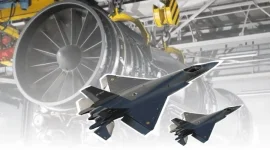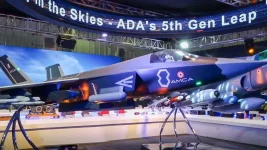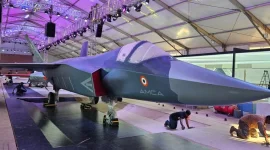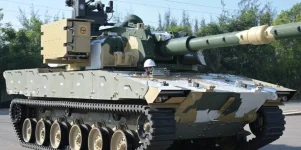- Views: 3K
- Replies: 25
In a landmark development for India's defence manufacturing sector, the government has opened the door for private companies to compete for the production of the nation's futuristic fifth-generation stealth fighter, the Advanced Medium Combat Aircraft (AMCA).
Industrial giants Larsen & Toubro (L&T) and Tata Advanced Systems Limited (TASL) are now positioned to challenge the long-standing dominance of the state-owned Hindustan Aeronautics Limited (HAL) for this prestigious contract.
This policy shift, confirmed by the Ministry of Defence, moves away from the traditional practice of automatically awarding aircraft manufacturing projects to HAL.
The decision to invite competitive bids is driven by a strategic push to expand India's industrial capacity, prevent production delays, and ensure the Indian Air Force (IAF) receives critical assets on schedule.
The Strategic Imperative of the AMCA
The AMCA is the cornerstone of India's future air combat strategy and its Aatmanirbhar Bharat (self-reliant India) initiative in defence.Designed by the Aeronautical Development Agency (ADA), the single-seat, twin-engine aircraft is a multirole stealth fighter intended for air supremacy, ground attacks, and missions to disable enemy air defence systems.
Featuring advanced technologies like a low radar signature, the ability to maintain supersonic speeds without afterburners (supercruise), and artificial intelligence-integrated avionics, the AMCA is set to be a formidable platform.
The IAF plans to procure an initial 126 of these aircraft, with production slated to begin around 2035.
The program, valued at approximately ₹15,000 crore for its initial development phase, is critical for replacing the IAF's aging Sukhoi Su-30 MKI fleet and maintaining a technological edge in the region.
Production Bottlenecks Prompt Policy Change
While HAL is considered a strong contender due to its vast experience, its current production schedule is overloaded. The company is managing multiple high-priority projects, including the Tejas Mk1A and Mk2 fighters, upgrades for the Su-30 MKI fleet, and the production of Prachand combat helicopters.Significant delays in these existing programs have raised concerns about HAL's capacity to handle the AMCA project alone.
Notably, the company failed to deliver any of the 83 ordered Tejas Mk1A jets by the initial March 2024 deadline, citing supply chain issues. This backlog has reportedly caused frustration within the IAF, which is grappling with a squadron strength of 31 against a sanctioned requirement of 42.
Speaking at Aero India 2025, IAF Chief Air Chief Marshal AP Singh expressed sharp disappointment over the Tejas delivery timeline, highlighting the urgency of diversifying India's defence production capabilities.
Private Sector Steps Up
On May 27, 2025, Defence Minister Rajnath Singh approved an execution plan that formally mandates competitive bidding for the AMCA's prototype development and subsequent production. This allows private firms like L&T and TASL, as well as others, to bid for the contract either independently or as part of a joint venture.The goal is to leverage private sector efficiency and innovation to meet an ambitious timeline, which targets the first prototype flight by 2031 and induction into the IAF by 2034.
Both L&T and TASL have developed significant expertise in the defence and aerospace domain.
L&T is a key supplier of critical systems for various defence programs, while TASL has a major partnership with Airbus to manufacture C295 military transport aircraft in India.
Their established capabilities in complex systems integration and large-scale manufacturing make them credible competitors for the AMCA program.
To combine expertise, a potential joint venture model has been proposed, which would see HAL holding a majority stake while private firms take on significant work packages.
However, experts have cautioned that for true innovation and efficiency, private industry may need a leading role to avoid the production bottlenecks that have affected past projects.
This competitive approach signals a new era for Indian defence manufacturing, aimed at building a more robust, capable, and self-reliant industrial base.





